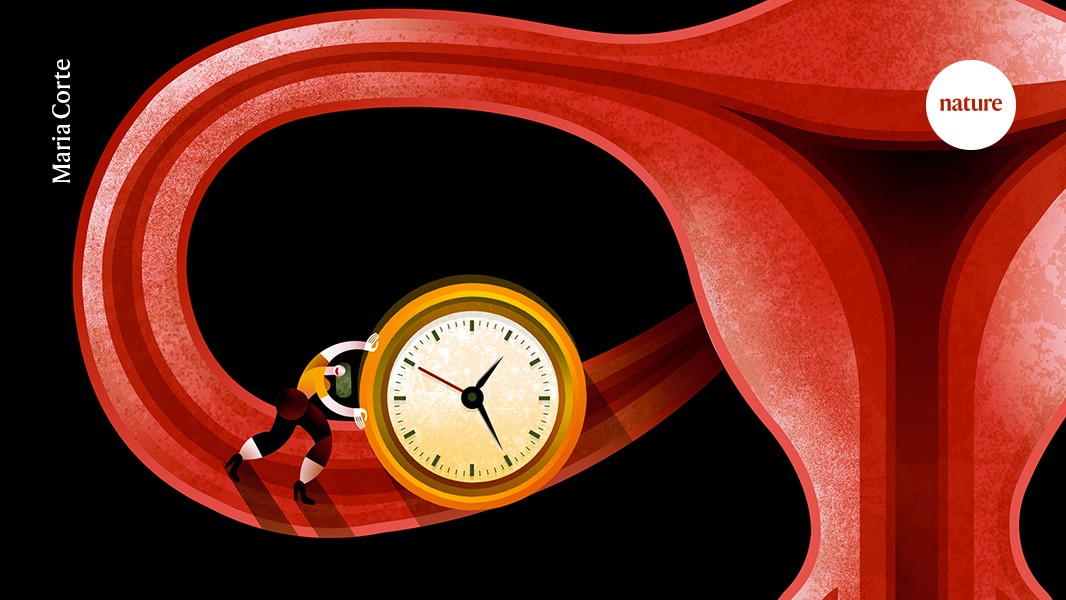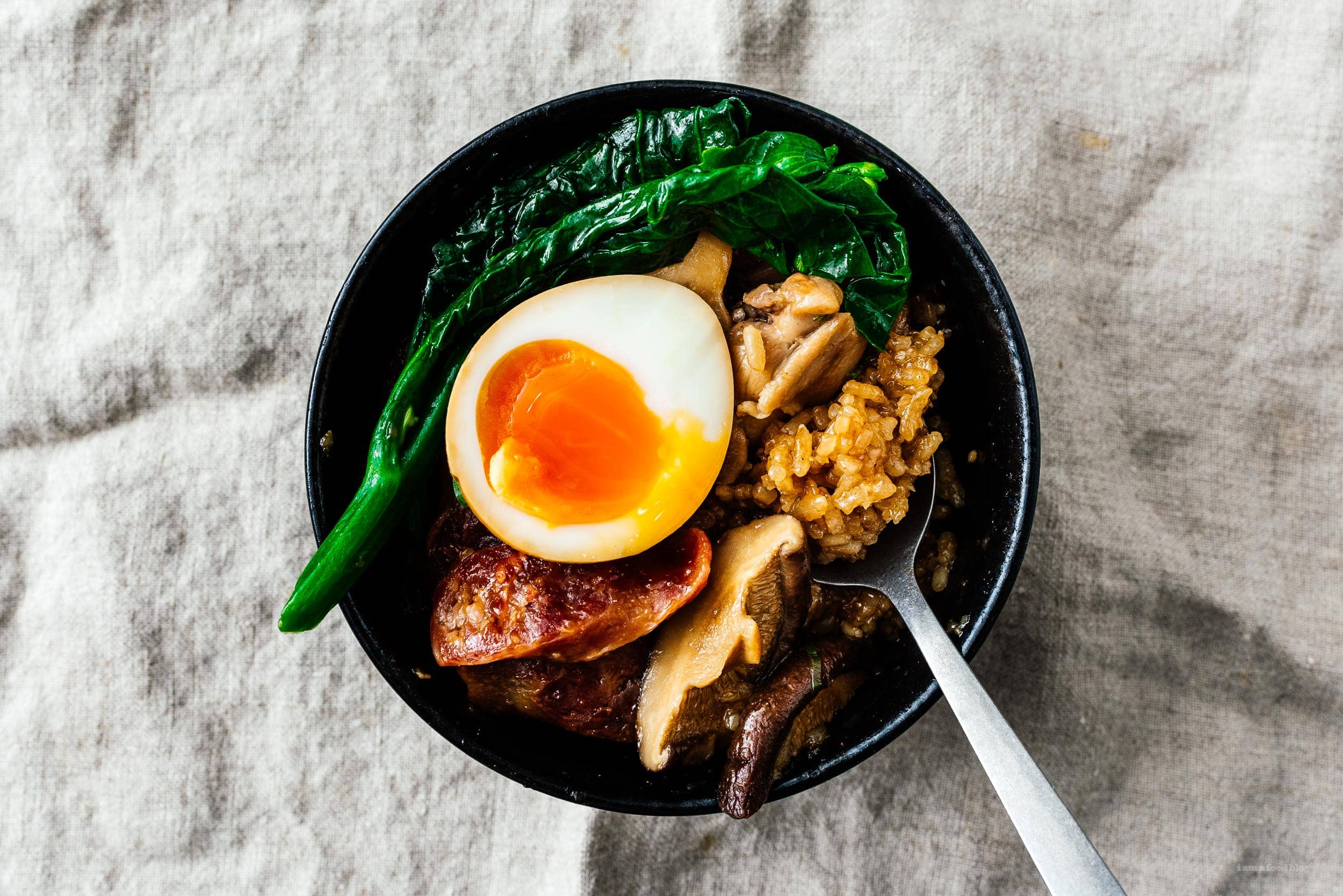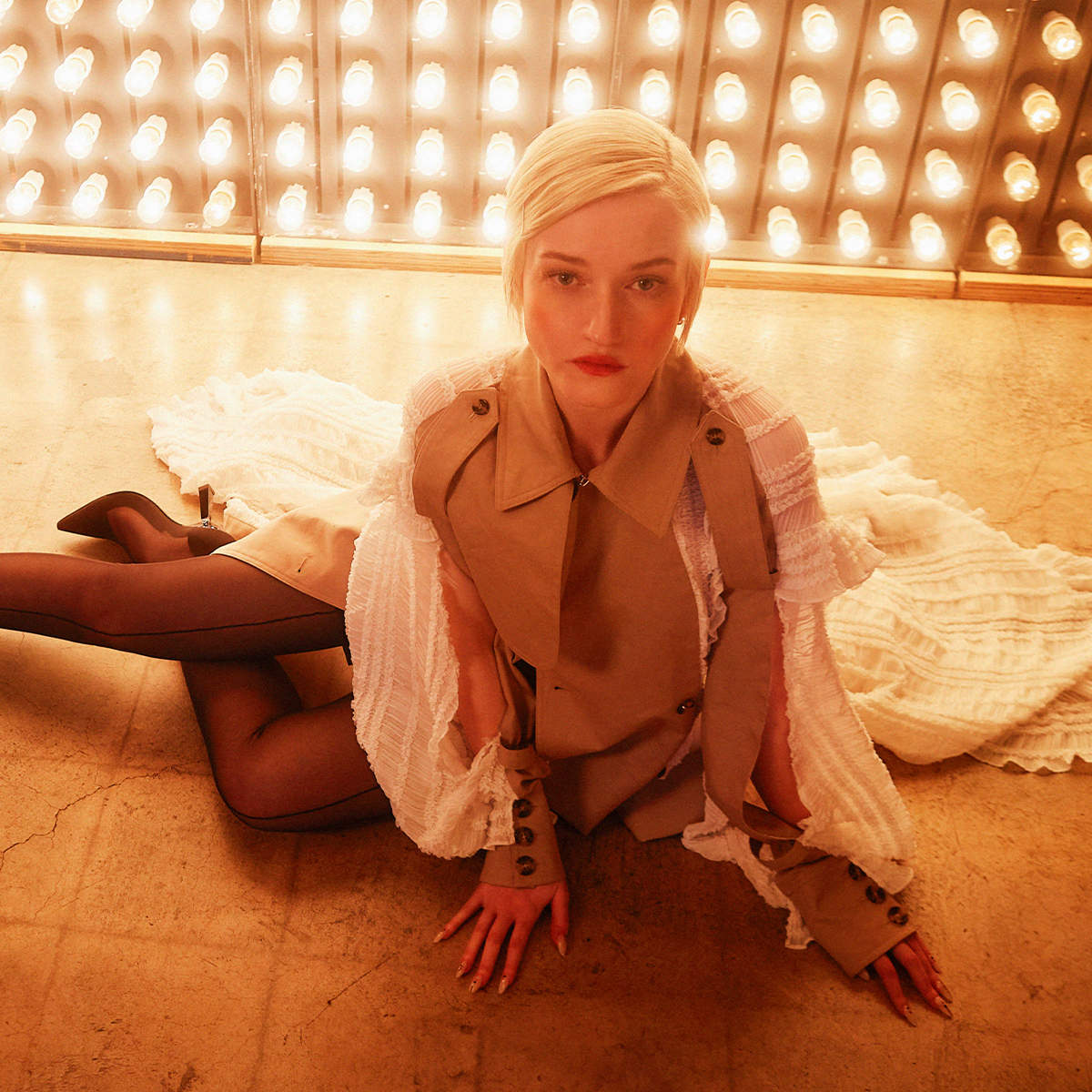How to eat and travel more sustainably in Florence
This is not the first time I have written about this subject, but it seems, year after year, that it is more and more important to keep talking about this. Florence sees record numbers each year and its popularity, in such a small town, means there is absolute chaos in the historical centre for a […] The post How to eat and travel more sustainably in Florence first appeared on Emiko Davies.

This is not the first time I have written about this subject, but it seems, year after year, that it is more and more important to keep talking about this. Florence sees record numbers each year and its popularity, in such a small town, means there is absolute chaos in the historical centre for a longer period of the year — it is not just July and August that see the most tourists, but now, because of the increasingly common extreme heat over the summer months in Tuscany, you’ll see crowds from Easter through to October. So if you’re planning on visiting Florence at really any time of the year, do have a read.
I originally published a How to Travel More Sustainably to Florence piece on my Substack newsletter in August 2023 after this Instagram post about the crushing crowds of a certain panino shop went viral. I have now unlocked the paywall on this piece to be able to share it more widely, as well as sharing the points below (and so many links and suggestions!). But this new post was inspired by an article I wrote for Corriere della Sera (in Italian, see here for the explanation in English and discussion on my newsletter) about a wonderful restaurant in Florence that is closing this week and the conversation about the Florentine dining scene and overtourism that that closure has brought about.

First of all, what does it mean to travel sustainably? There are layers to what this but I think this quote from this National Geographic piece, sums it up quite well:
“Sustainable travel is about traveling in a way that’s sensitive to the climate and nature emergencies while ensuring that the wellbeing of the places we visit gain long-term benefit from us traveling there. It’s a balancing act between maximizing the positives of travel while reducing or eliminating the negatives.”
Here are my suggestions:
Don’t add yourself to a long queue
Florentines don’t have the patience to queue, they wouldn’t queue. If you see a line, it’s definitely just tourists. Don’t you want to use your time in Florence in a better way other than spending it in queues (already so many for the museums!)? Forget the lines — there is always another option. Gelaterie and panini are all over Florence (both are historically very Florentine things, not just made popular by social media! There are plenty of good choices, do not think you need to line up just for one “special” place). And please, don’t queue up for that panino, here are 11 other wonderful panini places that are better, more special and more uniquely Florentine.
Visit the quieter museums
Florence is full of incomparable museums, many of them are actually really pretty quiet. I once worked as a tour guide in Florence for 5 years and have visited them all multiple times over the years. While the Uffizi and the Accademia are extremely crowded, I think these are incredible and less crowded (in some cases empty!):
The Bargello: Go for the Michelangelos and Cellinis in particular, but also Donatello and the medieval architecture.
Palazzo Davanzati is also a really unique museum I love, especially as a medieval “home” (the frescoes! And don’t miss the kitchen upstairs!)
La Specola — the Medici family’s collection of wax anatomical sculptures and taxidermy is fascinating, if a little macabre (the kids actually love this one) and it has recently had a huge renovation done to it.
Palazzo Strozzi is one of the extremely few museums that have also contemporary exhibitions and is set up for children and young people visiting. But also, in Florence not everything has to be a museum: my favourite paintings in the city are the Pontormo Deposition inside the little Santa Felicità church and the Ghirlandaio frescoes in the Santa Trinità church, both of which you can just walk into, no queues, no fees.
Also take note that in busy seasons, many Florentine museums have evening openings and most tourists don’t realise this! The Accademia Gallery, for example, is open Tuesdays until 10pm and Thursdays until 9pm from 4 June-24 September, 2024.

Eat and explore also outside of Florence
While there are really plenty of good spots to eat in the historical centre, these are very largely frequented by tourists. I’ll explain a bit as to why that is. You see, Florentines like to have the convenience of driving their car to a restaurant and parking right nearby. The historical centre is guarded by the ZTL, which means it is not open to traffic other than private drivers, taxis, busses and the small percentage of Florentines who still live in the centro. So they like not having to walk too far, they also don’t want to risk a fine. The neighbourhood of Sant’Ambrogio is one of the few inside the historical centre where you can park easily (in the underground carpark under Piazza Ghiberti) and walk in a minute or two to some great spots like Il Nugolo and the iconic Cibreo. Some parts of San Frediano and San Niccolò are easily reached by nearby parking too, hence why you’ll also find many more places visited by Florentines there too. But why not leave the old walls of the historical centre and explore other neighbourhoods of the city, which are easy to reach by tram or bus, or go right out of the city and visit another place? Here are just a handful of ideas:
Soffiano is an outer neighbourhood on the western side of Florence, easily reached on the tram along Viale Talenti. Here you can find one of my favourite pastry shops, Giorgio, which is also a good spot for aperitivo and next door Alla Corte dei Tre, which is just a cute, quiet neighbourhood pizza place. I also love Oko Bento, a Japanese bento place run by two Japanese mammas, just outside of the San Frediano gateway. It is mainly for takeaway but there are a couple of chairs too. They sell out quickly so get there on the early side. If you miss out, Bistro Santa Rosa is nearby and has a lovely garden.
Settignano (my old neighbourhood, we lived here for 5 years!) is a wonderful hilltop neighbourhood of Florence with oddly no tourists, even in the high season. Take the #10 bus up there. It’s a good spot for shady walks and beautiful views over olive groves and Florence below. Our favourite restaurant here is run by a husband and wife team, Caffe Desiderio, right in the piazza. Da Tullio – a steep drive a little further up the hill in Montebeni past Settignano, a great spot for bistecca and classic Florentine fare. Coquinarius has a beautiful restaurant in Fiesole overlooking Florence, try that one instead of their Duomo location.
Lastra a Signa is a short 15 minute train ride from Florence. Stay at Valdirose, a stunning B&B run by Paolo and Irene in Irene’s old family home (fun fact, I have photographed 3 of my cookbooks here!). Eat at the pretty urban farm Fattoria Bucolica, which is run by two brothers. It’s a magical setting under the trees, the menu is almost entirely their own production (the only things they buy in are salt, pepper, sugar, coffee and natural wines).
San Miniato (above), where I live now, is 40 minutes on the train from Florence (and then a bus up the hill) — you can read all my favourite eats here. Maggese is worth the trip alone and so is Collebrunacchi, slightly in the countryside. Before moving here I used to come just to visit the Slow Food Falaschi butcher, even before it became also a restaurant (can you believe there is nothing like this even in Florence?!). Visit during the white truffle festival in November or La Luna Azzurra, the street theatre festival in June, to see it really alive. The rest of the time it is a pretty, quiet and sleepy town, which is what I love about it!
Pistoia is also a short train ride from Florence and has the most adorable market (the second image below), plenty of places to eat surrounding the market, a lovely historical centre and like San Miniato, no tourists. If you want a more special dining (and drinking) experience, try the elegant Baldovino.
Livorno is an hour from Florence on the train and is a place I have long loved and written about (here’s one from 2012 about Gagarin, which was featured in Stanley Tucci’s Tuscan episode from Searching For Italy). The covered market (below) is my favourite in Tuscany (you can just browse or you can eat there too. Sadly, Gagarin, the down to earth little focaccia and torta di ceci bakery I used to always go is now swamped with a long queue thanks to Tucci, but if you go early it’s worth a try. The kids like the Livorno Aquarium and one of my favourite museums is here — Museo Giovanni Fattori — a celebration of the Macchiaioli artists (Tuscany’s impressionists), that is oddly (refreshingly) very quiet.

Visit during the winter
No longer is October “quiet season” — even before but especially since covid, October has proven to be one of the busy periods of the year. Come in November for the real start of autumn, the first chestnuts, the new olive oil and white truffles from San Miniato. Come in December (probably my favourite time to be in Florence) for the twinkly Christmas lights and festive atmosphere. In January and February you can just walk into museums in Florence and you have the place to yourself, not to mention all the carnival treats like schiacciata fiorentina and frittelle di riso (fried rice fritters).
Whatever you do, just come before Easter, whenever Easter happens to be, because from that moment until November, there is utter chaos in Florence and it is significantly more expensive. And if you don’t want to melt in the exhausting, excruciating extreme summer heat, avoid at all costs July-August, when it is easily 40°C (104°F). This is also the time of year we see more extreme weather (I just spent 48 hours in London’s Gatwick airport, 7 of them stuck inside a plane sitting on the tarmac, after two flights to Italy were cancelled for severe thunderstorms and hail the size of tennis balls) and it is an unpleasantly busy and crowded time in travel hubs, not to mention expensive. There are so many good reasons to avoid travel this time of the year if you can help it. See here for some more tips and images I shared on Instagram.
Don’t stay in Airbnbs
I know, everyone wants to just book an airbnb. But try to avoid it in cities like Florence and Venice, where this is causing a housing crisis and pricing residents out of their own city (here is a recent Guardian article if you want to read more about some of the devastating effects of Airbnb in Florence). Book a hotel. Airbnbs are not cheaper, they have actually driven the prices of hotels up and Florence is really expensive now thanks to Airbnb. You can easily spend 250 euro a night on a really terribly average, ordinary Airbnb in the height of summer. For something unique and in a great location try Soprarno, or one of its sister hotels, or Numeroventi (they do artist residences too). If you want to spend less, base yourself outside of Florence, perhaps even in an agriturismo (a farm stay). If you’re on a budget, look outside the city or why not try something like a monastery stay? My first stay in Florence when I moved here in 2001 was in a convent! It felt safer and was much cheaper even than a hostel. In San Miniato you can stay in a beautifully restored Seminary for 50 euro a night. See some more suggestions on favourite stays here.

Just Wander
Remember those days when we didn’t have smart phones, GPS and social media? And maybe we had a guide book, but we mostly explored by wandering, with our heads up and looking around? I don’t want to be too nostalgic about it, I know that times change and mostly a lot of people travel through social media now but perhaps there is still a way to try to “get lost” and wander and not plan everything, just find things by simply coming across them. Maybe it would be fun to travel without a smartphone, put it away in your bag, don’t take photos of everything and just see where you get to? This is definitely the best way to travel in Japan, for example — I had someone recently ask me for tips (this is a tiny guide of some addresses I love around Ginza, Tokyo) but after a lifetime of traveling in Japan, I can tell you every corner is full of gems and the best way to explore is just going and exploring, you don’t need a guide book or social media. I would say the same for Venice, as long as you literally get yourself off the beaten track (like here).
Share your trip (or these tips!) responsibly with others
Don’t be one of those influencers who tells people to get delivery to the Airbnb of an overcrowded, overhyped, crowded, place that has destroyed a neighbourhood and that you can eat at in Las Vegas, not just Florence. Instead, tell them about the quiet, out of the way places you discovered on your trip that you can only find here, the places that are unique, that were special. How much better is a story that goes, “I just stumbled across this wonderful place…” than “I went to that place on TikTok….”
What other suggestions can you add?
See also My favourite eats in Florence (this is a piece I wrote in 2023 and originally had a paywall, I’m unlocking it now so that this can be shared).
And please listen to this BBC World Service Documentary podcast, “The Street that Tech Built”, hosted by my friend and fellow author and long time Florence resident, Kamin Mohammadi, about hypertourism in Florence. I contributed a little of story to this piece!

The post How to eat and travel more sustainably in Florence first appeared on Emiko Davies.
What's Your Reaction?




















![[FREE EBOOKS] Hacking and Securityy, The Kubernetes Book & Four More Best Selling Titles](https://www.javacodegeeks.com/wp-content/uploads/2012/12/jcg-logo.jpg)





















![AI in elementary and middle schools [NAESP]](https://dangerouslyirrelevant.org/wp-content/uploads/2025/01/NAESP-Logo-Square-1.jpg)








































